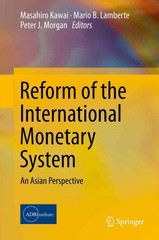Question
Explain each briefly 1. Dominance of neoliberal ideas and theories. 2. The Global Economy: Removal of barriers to the movement of goods, services, capital, and
Explain each briefly
1. Dominance of neoliberal ideas and theories.
2. The Global Economy: Removal of barriers to the movement of goods, services, capital, and money across national boundaries.
3. The Role of Government in the Economy
a) Renunciation of aggregate demand management
b) Deregulation of basic industries
c) Deregulation of the financial sector
d) Weakening of regulation of consumer product safety, job safety, and the environment
e) Weakening of anti-trust enforcement
f) Privatization and contracting out of public goods and services
g) Cutbacks in or elimination of social welfare programs
h) Tax cuts for business and the rich
4. The Capital-Labor Relation
a) Marginalization of collective bargaining
b) Casualization of jobs
5. The Corporate Sector
a) Unrestrained competition
b) Corporate CEOs hired from outside the corporation
c) Market principles penetrate inside corporations
d) Financial institutions shift toward new types of activities and become relatively independent of the non-financial sector
6. Dominance of Keynesian ideas and theories.
7. The Global Economy: The Bretton Woods System, with fixed exchange rates, a gold-backed U.S. dollar as the world currency, and a moderately open world economy although with tariffs and some obstacles to free capital movement.
8. The Role of Government in the Economy
a) Keynesian fiscal and monetary policies aimed at a low
unemployment rate and an acceptable inflation rate
b) Government regulation of basic industries
c) Government regulation of the financial sector
d) Social regulation: environmental, occupational safety and health, and consumer product safety
e) Strong anti-trust enforcement
f) A high level of provision of public goods and services including infrastructure and education
g) Welfare state
h) Progressive income tax
9. The Capital-Labor Relation
a) A major role in collective bargaining between companies and unions
b) Large proportion of stable, long-term jobs
10. The Corporate Sector
a) Co-respective competition
b) Corporate CEOs promoted from within the corporation
c) Bureaucratic principles govern relations within corporations
d) Financial institutions mainly provide financing for nonfinancial businesses and households
Step by Step Solution
There are 3 Steps involved in it
Step: 1

Get Instant Access to Expert-Tailored Solutions
See step-by-step solutions with expert insights and AI powered tools for academic success
Step: 2

Step: 3

Ace Your Homework with AI
Get the answers you need in no time with our AI-driven, step-by-step assistance
Get Started


